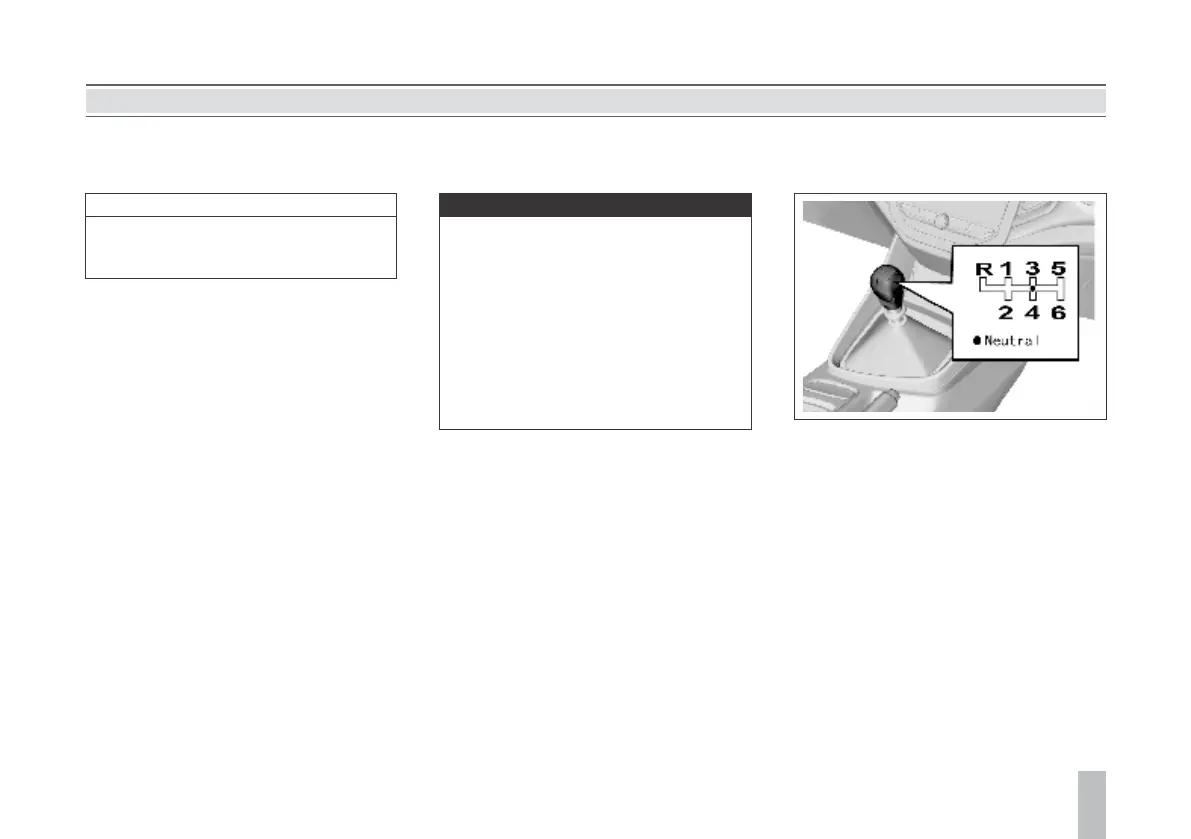139138
Third Step: Operation for Cruise
Recovery
When the vehicle exits from the cruise state and
enters the cruise activation state, if you are to
carry out the cruise control at the previous
cruising speed, you just need pull the toggle
button once towards the “RES/+” direction. Then
cruise control is carried out at the previously-
saved speed recovered. For example, the cruising
speed is 60 Km/h before braking and becomes 50
Km/h after braking, and at the time the cruise
indicator of instrument flickers. Pull the toggle
button once towards the “RES/+” direction; the
cruise indicator will be normally on, and the
vehicle will automatically speed up to 60 Km/h and
enter the cruise control state.
Fourth Step: How to Promote Cruise
Control Speed
Pull the toggle button towards the “RES/+”
direction and the set cruising speed will rise
without the need to depress the accelerator
pedal. The speed will rise by 2 km/h every time
you pull up the switch once. If the toggle button
is kept pressed, the vehicle speed will
continuously rise. Once the switch is released,
the then running speed will be saved into the
memory and the vehicle will cruise at the speed.
Fifth Step: How to Reduce Cruise
Control Speed
Pull the toggle button towards the “SET/-”
direction to reduce the cruising speed. The
speed will reduce by 2 km/h every time you
pull down the switch once. If the toggle button
is kept pressed, the vehicle speed will
continuously reduce. Once the control lever is
released, the then running speed will be saved
into the memory and the vehicle will cruise at
the speed. If the toggle button is released
when the vehicle speed reduces to about 40
km/h (less than 40 km/h), the saved value will
be deleted. If you are to continuously drive at
the cruise control speed, you need reset the
cruising speed.
In principle, the cruise control system
can be used on one expressway or one
totally-closed road. It is not allowed to
use the cruise control system in rainy, icy
and snowy weather, and on one densely-
hillside road or densely-crooked road.
Cruise control is also not proper on a
rugged pavement and when too many
vehicles run on one road.
Caution
For the MT model, after the cruise
control system is started, if you intend to
shift the transmission to the neutral
position, always depress the clutch pedal
firstly. Otherwise, it may cause the
engine to overspeed and thus get
damaged.
Note
Engine Immobilizer System
The vehicle with the engine immobilizer
system has the extra anti-theft capacity, for
the system can prevent any unauthorized
person from starting the vehicle. The matching
key of the engine immobilizer system has been
encoded electronically. The electronic
transceiver is concealed in the ignition key.
Only a valid key can be used to start the
engine. However, an invalid key can also be
used to open doors. The engine immobilizer
system isolates the power supply from the
ignition system, the fuel pump and the fuel
injector. When any unauthorized person turns
the invalid key to the START position, the
engine immobilizer system fails to identify the
electronic code. Therefore, the engine cannot
start and the immobilizer system indicator will
be flickering.
DRIVING AND CONTROLS
If the vehicle is equipped with one
steering wheel mechanical lock again, a
better anti-theft result will be realized.
Note
Parking
Ÿ When the parking brake is used for
parking, the button shall be released after
parking. When parking on a ramp, tension
the parking brake as tightly as possible and
depress the brake pedal at the same time.
Ÿ Shut down the engine and turn off the
ignition switch. Turn the steering wheel till
the steering wheel is locked by the
steering wheel lock.
Ÿ When parking the vehicle on one uphill
ramp, turn the front wheels away from the
road shoulder. When parking the vehicle
on one downhill ramp, turn the front
wheels towards the road shoulder.
Ÿ When parking the vehicle on one downhill
ramp, turn the front wheels towards the
road shoulder.
Do not park and drive the vehicle on
inflammables such as straw and hay. If
such inflammables cannot be avoided,
park the vehicle to check and confirm
that these inflammables are not attached
at the chassis after the vehicle passes the
inflammables.
Otherwise, these inflammables may be
i g n i t e d b y h i g h - t e m p e r a t u r e
components on the chassis, and thus a
fire accident is caused.
Caution
Manual Transmission*
Shift the gear as per gear positions marked on
the gear lever ball after the clutch is released. If
you have to shift to the reverse gear, you must
firstly stop the vehicle, depress the clutch, and
shift the gear lever from the neutral (N) gear
to the reverse (R) gear.
1: First drive gear 2: Second drive gear
3: Third drive gear 4: Fourth drive gear
5: Fifth drive gear 6: Sixth drive gear (if any)
R: Reverse gear
Depress the clutch pedal completely when
shifting gear. Do not always put your foot on
the clutch pedal during driving.
DRIVING AND CONTROLS

